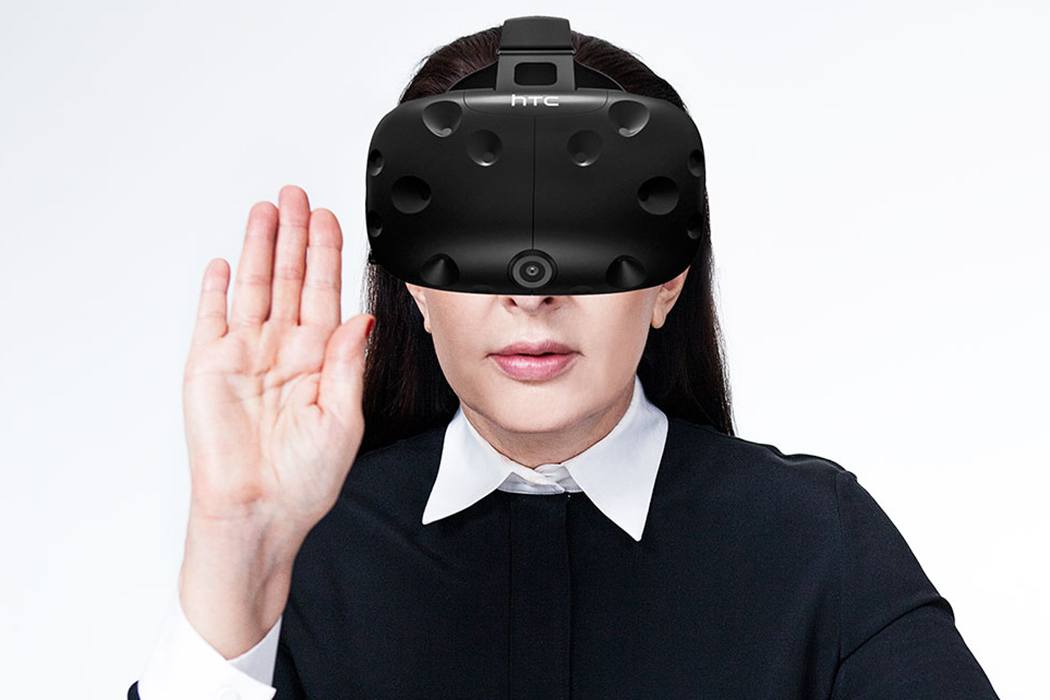There’s a new player on the virtual reality (VR) scene. Acute Art is marketed directly to artists and will be available in the fall. To preview the platform, the studio invited artists Marina Abramović, Olafur Eliasson, and Jeff Koons to try out some new material. The making-of video discusses the potential of a viable commercial VR.
Over the decades, VR has moved from the edges to the mainstream, always greeted with skepticism and fears that it’s just another passing fad. But we now have consumer-grade specs like the Oculus Rift and controllers like the Touch for games. Virtual reality in art has always been less sleek, more DIY, and with lots of stops and starts.
As Raymond Gozzi Jr. wrote about virtual reality’s promise and threat back in 1995, it “has caught people’s imaginations and inspired fantasies far out of proportion to what the technology can actually deliver, now or in the foreseeable future.”
To the outside observer, there is only the strange spectacle of a person wearing a bulky helmet waving a gloved hand around and moving in weird, unpredictable ways…. I am told that the graphics are rudimentary and the illusion is partial. There is a slight delay between your movement and the corresponding movement of the environment. The head-mounted display is bulky and heavy. And after a while, some users start to feel queasy and ill.
Gozzi feels the main potential of virtual reality is as a “miniaturizing metaphor,” a way to make a large and complex problem simple and digestible—though there’s a risk that making something too digestible can diminish its power and meaning. A great example is Abramović’s interactive work for Acute Art, which focuses on the theme of climate change. If you choose environmentalism, Marina lives; if you choose consumption, she drowns from rising sea levels.
There’s an obvious irony here; the virtual environment becomes an idealized stand-in for an imperfect (in this case, rapidly declining) reality. Any recreation of a natural landscape can be a distraction from, or a reminder of, its loss. This is encapsulated beautifully in the New Palmyra 3D scanning and printing project, where Syrian activist Bassel Khartabil created 3D models of heritage architecture under threat of destruction during war. (For his efforts, he was detained by the Syrian military in 2012 and has been missing since 2015.)
The more seamless a new VR platform—the farther away from bulky, heavy, and queasy—the more it risks devaluing its source material. Why travel to visit an iceberg and see its crumbling firsthand when you can virtually interact with an immaterial glacier that will never melt?
While VR was certainly more challenging to use in the 1960-2000s, its very imperfect nature—the ad-hoc assemblages of various technologies—was often what made those projects special. In 1994, Dan O’Sullivan wrote in “Choosing Tools for Virtual Environments,” about work that was “disjointed” and “full of seams,” concluding that VR environments shouldn’t strive to be perfect. A little bit of abstraction goes a long way. It commits the participants to use their own imaginations, involves them more fully in the process, and brings some of our IRL experiences into the virtual space:
Beyond producing perceptual illusions, interactive media can tap the imagination by making a partner of it. If the audience has an investment in the creation of an imaginary world, less technology is required to maintain the illusion. Less work maintaining the illusion means a greater ease of creativity. Creative work feeds back again to better capture the imagination.
From the previews, Acute Art doesn’t seem quite photorealistic, and maybe that’s for the best.







